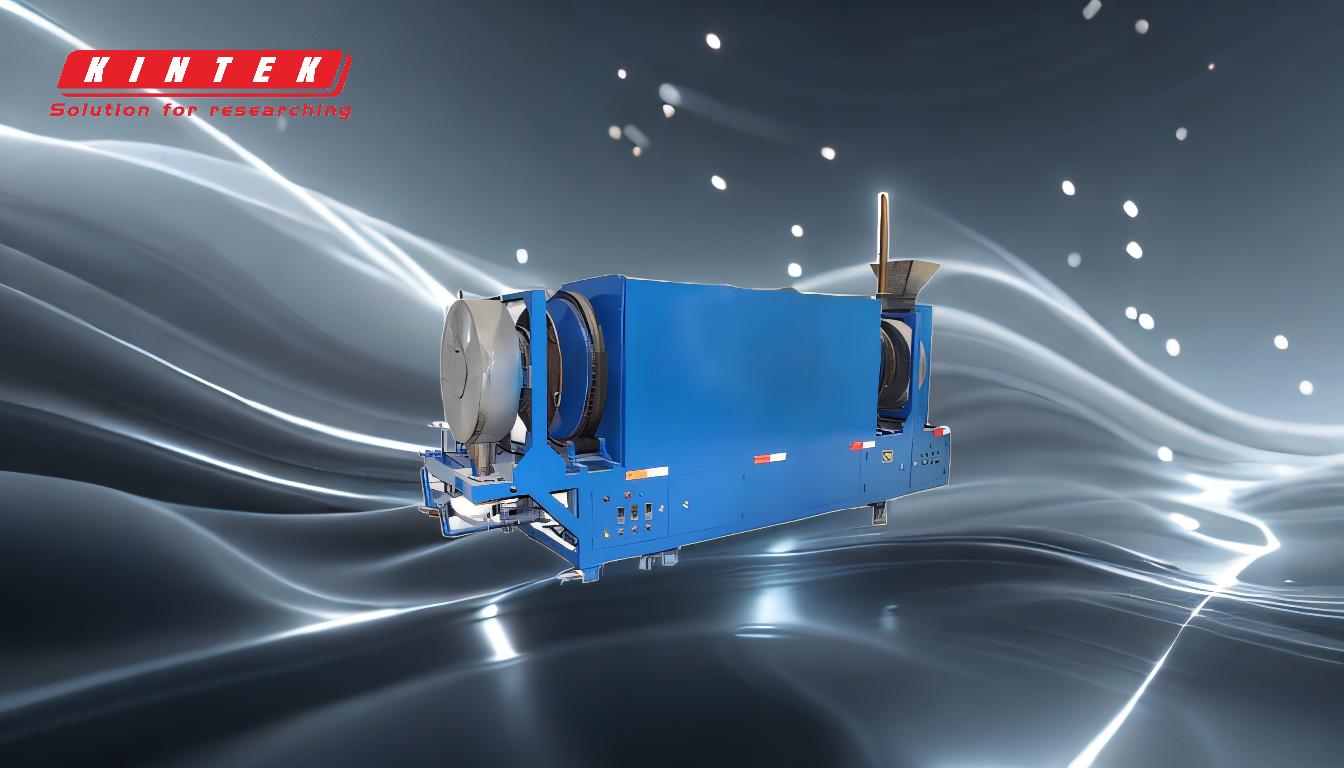Pyrolysis is a thermochemical decomposition process that occurs when organic materials are heated in the absence of oxygen, breaking them down into smaller molecules and chemical compounds. This process generates solid (e.g., biochar), liquid (e.g., bio-oil), and gaseous (e.g., syngas) products, which have diverse applications in industries such as energy, chemicals, and waste management. An example of pyrolysis is the charring of wood, where wood is heated without oxygen to produce charcoal, a solid residue, along with gases and liquids like wood vinegar and pyrolytic oil. Pyrolysis is also used in the chemical industry to produce ethylene, hydrogen gas, and carbon from petroleum, coal, and natural gas. Additionally, it plays a role in converting waste plastics and tires into usable oil, gas, and solid residues like carbon black.
Key Points Explained:

-
Definition and Mechanism of Pyrolysis:
- Pyrolysis is the thermochemical decomposition of organic or inorganic materials through heating in the absence of oxygen.
- This process breaks down complex materials into smaller molecules, producing solid (e.g., biochar), liquid (e.g., bio-oil), and gaseous (e.g., syngas) products.
- The absence of oxygen prevents combustion, allowing the material to decompose into its constituent parts.
-
Example of Pyrolysis: Charring of Wood:
- One of the most common examples of pyrolysis is the charring of wood.
- When wood is heated in an oxygen-free environment, it decomposes into charcoal (a solid residue), wood vinegar (a liquid), and pyrolytic oil.
- This process has been used historically to produce charcoal for fuel and industrial purposes.
-
Industrial Applications of Pyrolysis:
- Chemical Industry: Pyrolysis is used to produce ethylene, hydrogen gas, and various forms of carbon from petroleum, coal, and natural gas.
- Waste Management: Pyrolysis converts waste materials like plastics and tires into valuable products. For example, plastics are transformed into oil and gas, while tires yield carbon black, steel, and oil.
- Energy Production: Biomass pyrolysis produces bio-oil, which can be used as a substitute for fuel oil or as a feedstock for synthetic gasoline and diesel.
-
Products of Pyrolysis:
- Solid Products: Biochar, charcoal, and carbon black are solid residues used in agriculture, energy, and industrial applications.
- Liquid Products: Bio-oil, wood vinegar, and pyrolytic oil are liquids that can be used as fuels or chemical feedstocks.
- Gaseous Products: Syngas (a mixture of hydrogen, carbon monoxide, and other gases) is used for energy generation or as a chemical feedstock.
-
Types of Pyrolysis:
- Carbonization: A slow pyrolysis process used to produce charcoal from biomass.
- Methane Pyrolysis: Converts methane into hydrogen gas and solid carbon.
- Flash Pyrolysis: A rapid process used to maximize liquid bio-oil production.
- Hydrous Pyrolysis: Involves the use of water to facilitate decomposition, often used in oil and gas exploration.
-
Environmental and Economic Benefits:
- Pyrolysis reduces waste by converting organic and inorganic materials into valuable products, contributing to a circular economy.
- It helps mitigate environmental pollution by processing complex waste streams like plastics and tires.
- The process supports green energy initiatives by producing biofuels and renewable chemicals.
-
Challenges of Pyrolysis:
- Pyrolysis is energy-intensive and requires specific conditions (e.g., controlled temperature and absence of oxygen) to operate effectively.
- The quality and composition of pyrolysis products depend on the feedstock and process conditions, which can vary widely.
- Scaling up pyrolysis for industrial applications requires significant investment in technology and infrastructure.
-
Future Applications:
- Pyrolysis has aspirational applications, such as converting biomass into syngas and biochar for renewable energy and soil amendment.
- It is being explored for advanced waste management solutions, including the degradation of complex oil-based flows and the treatment of sludge from water purification processes.
By understanding the principles, applications, and challenges of pyrolysis, industries can leverage this process to transform waste into valuable resources, reduce environmental impact, and support sustainable development.
Summary Table:
| Aspect | Details |
|---|---|
| Definition | Thermochemical decomposition of organic materials in the absence of oxygen. |
| Products | Solid (biochar), liquid (bio-oil), and gaseous (syngas) outputs. |
| Applications | Energy production, chemical industry, waste management. |
| Types | Carbonization, methane pyrolysis, flash pyrolysis, hydrous pyrolysis. |
| Benefits | Waste reduction, pollution mitigation, renewable energy production. |
| Challenges | Energy-intensive, feedstock-dependent, high infrastructure costs. |
Learn how pyrolysis can revolutionize your industry—contact us today for expert guidance!









